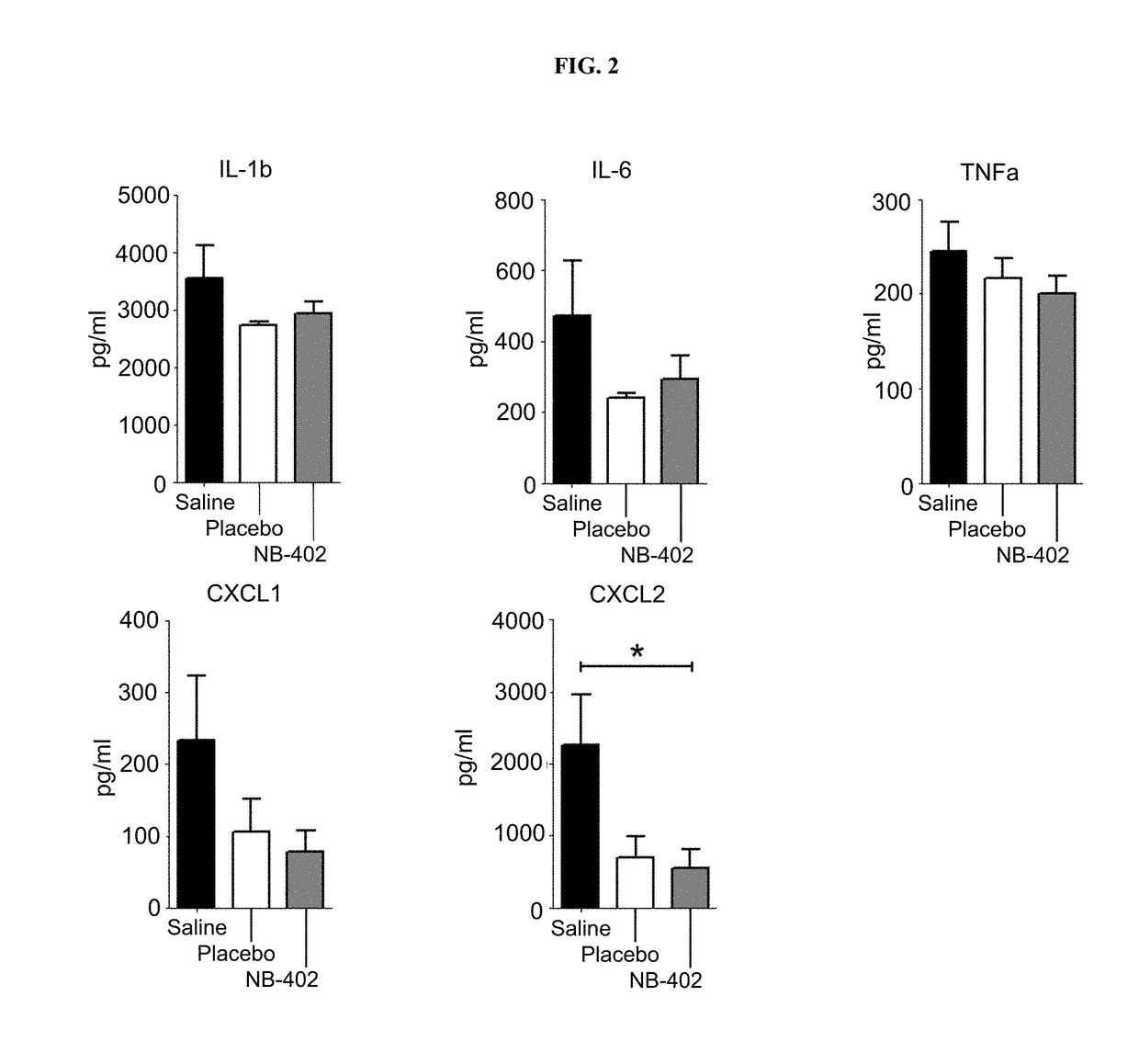Topical nanoemulsion therapy for wounds
a technology of nanoemulsion and wounds, applied in the direction of emulsion delivery, pharmaceutical delivery mechanism, oil/fat/waxes non-active ingredients, etc., can solve the problems of variable ability to penetrate eschar, uneven efficacy of both gram-negative and gram-positive bacteria, and potential limitations of each agen
- Summary
- Abstract
- Description
- Claims
- Application Information
AI Technical Summary
Benefits of technology
Problems solved by technology
Method used
Image
Examples
example 1
Novel Nanoemulsion Formulations and Stability
[0254]Experiments were conducted in order to generate and characterize novel nanoemulsions. A total of 50 formulations were produced by varying 5 different cationic surfactants and / or by varying the ratio of cationic to non-ionic surfactants (surfactant blend) in the nanoemulsion (NE) formulation within a particular surfactant family. Table 1 provides a summary of the number of nanoemulsion that passed or failed. Table 2 describes the cationic surfactant used in these studies. Table 3 shows two of the nonionic surfactant used in these studies. Table 4 shows the qualitative formula for the various nanoemulsions when the surfactant blend ratio of the cationic surfactant is altered from 6:1 to 1:1 to 1:6, etc.
[0255]The oil-in-water nanoemulsion were manufactured at a 500 gram scale by combining the excipients using simple mixing followed by high shear homogenization. This mixture was homogenized for 10 minutes using a Silverson L4RT Batch Ho...
example 2
Nanoemulsion and Telfa Absorption and Compatibility Study
[0280]Several of the nanoemulsions generated and initially characterized in Example 1 were utilized for further analysis.
[0281]Stability and compatibility of nanoemulsion with TELFA pad wound dressing was assessed. Experiments were conducted to determine stability and compatibility with TELFA for in vivo animal wound and burn models. TELFA (Kendall Co., Mansfield, Mass.) and TEGADERM HP (3M Health Care, St Paul, Minn.) were applied to prevent wound contamination and were used as a dressing in the in vivo experiments. Nanoemulsions tested are shown in Tables 10 and 11.
[0282]The burn wound was then redressed with TELFA and a TEGADERM occlusive dressing. The treatment and dressing change was repeated once, at 22 hours after burn injury.
[0283]Experiments were designed to determine the maximum absorption of the nanoemulsions, shown in Table 11, in a TELFA pad and the stability of the nanoemulsion formulations over time in contact w...
example 3
Antimicrobial Activity of Nanoemulsion Formulations
[0311]Experiments were performed in order to test the microbicidal activity of nanoemulsion formulations described herein against a wide range of bacteria.
TABLE 17Comparison of the Composition of the Liquid andCream Formulations of NB-201 containing BAKNB-201NB-201 LotionCreamTheoreticalTheoreticalNB-201 LotionExcipientsFunction(% w / w)(% w / w)PlaceboPurified WaterAqueous Diluent90.02734.92490.227(USP)Soybean Oil (USP)Hydrophobic oil6.27950.2326.279Edetate DisodiumPreservative1.8941.8941.894Dihydrate (USP)GlycerolOrganic solvent1.008—1.008EthanolOrganic solvent—8.00—Tween 20 (NF)Emulsifying0.592—0.592agentPoloxamer 407 (NF)Emulsifying—4.736—agentBenzalkoniumEmulsifying0.2000.2136—Chloride (USP)agent,preservative andactiveTotal100.00%100.00%100%
TABLE 18Comparison of Lotion and Cream Formulations of NB-201 and NB-402:SurfactantBlend Ratio, Concentration of Cationic Surfactant and Particle Size.CationicSurfactant / [CationicMeanNon-ionicSu...
PUM
| Property | Measurement | Unit |
|---|---|---|
| particle (droplet) size | aaaaa | aaaaa |
| particle sizes | aaaaa | aaaaa |
| particle sizes | aaaaa | aaaaa |
Abstract
Description
Claims
Application Information
 Login to View More
Login to View More - R&D
- Intellectual Property
- Life Sciences
- Materials
- Tech Scout
- Unparalleled Data Quality
- Higher Quality Content
- 60% Fewer Hallucinations
Browse by: Latest US Patents, China's latest patents, Technical Efficacy Thesaurus, Application Domain, Technology Topic, Popular Technical Reports.
© 2025 PatSnap. All rights reserved.Legal|Privacy policy|Modern Slavery Act Transparency Statement|Sitemap|About US| Contact US: help@patsnap.com



